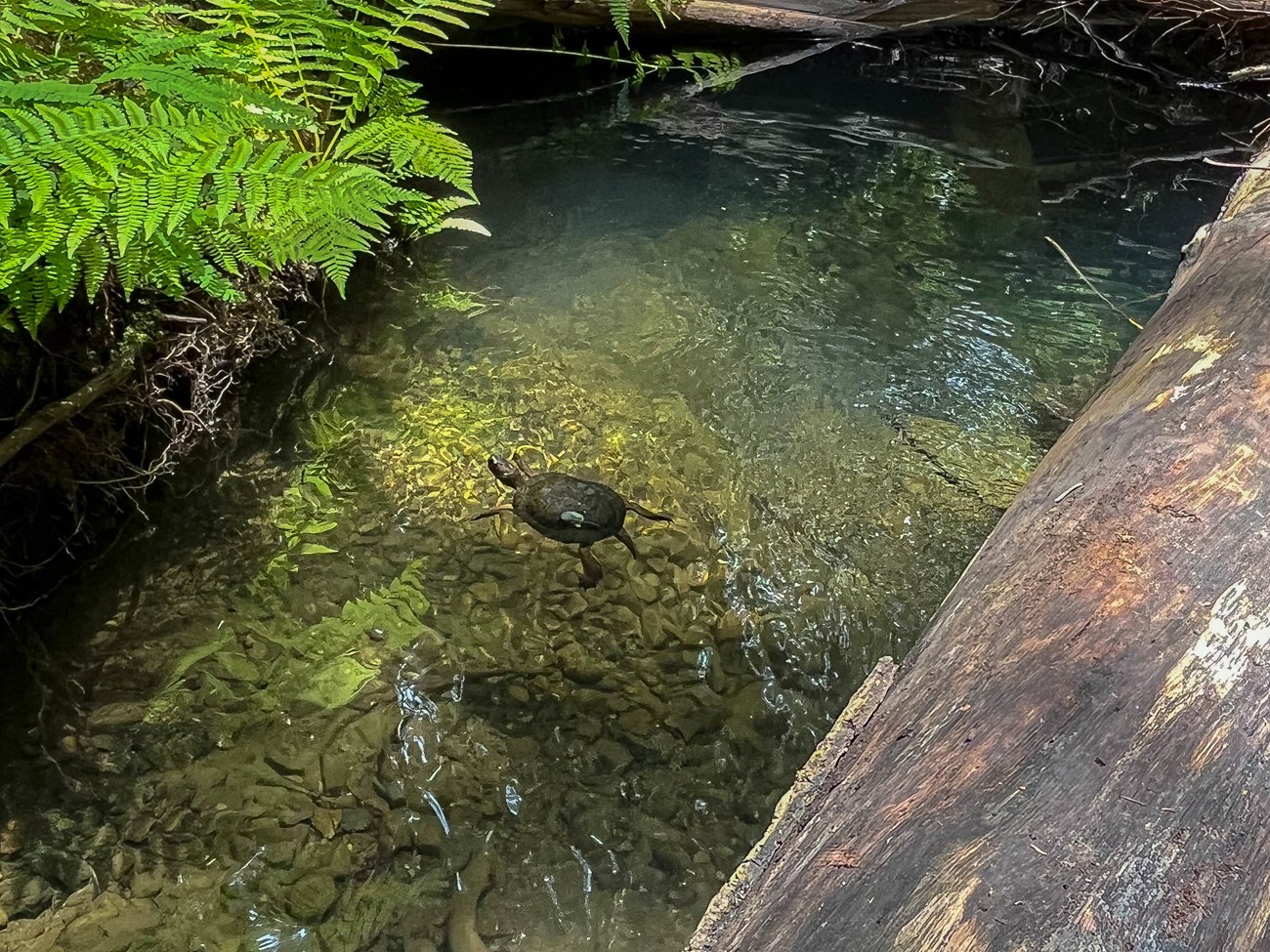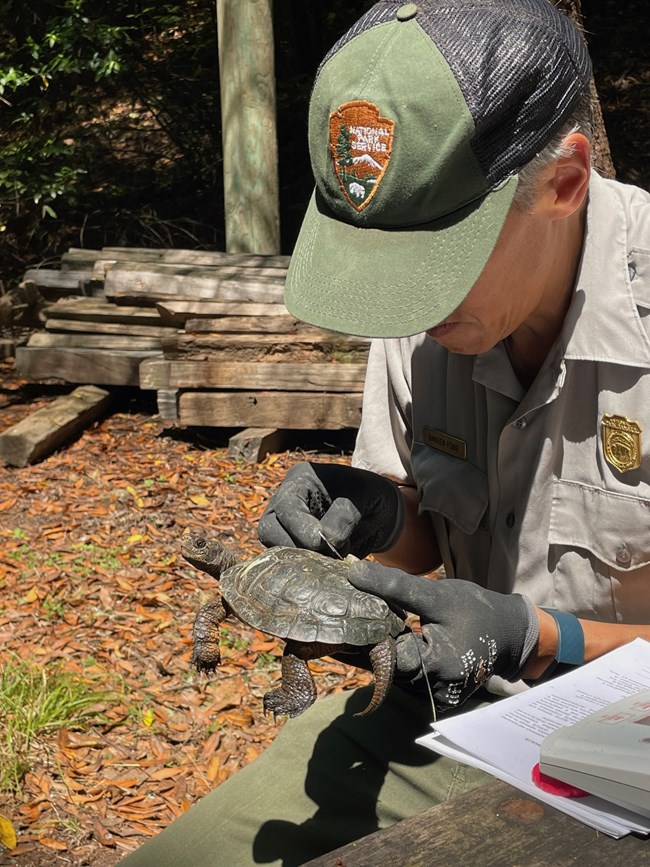Last updated: February 1, 2024
Article
Wandering Western Pond Turtles Turn Up in Muir Woods

NPS / Carolyn Shoulders
October 2023 - In 2017, scientists released a group of western pond turtles (Actinemys marmorata)—California’s only native freshwater turtle—at Muir Beach Lagoon as part of an effort to re-establish healthy populations of the species in their historical home range. Since then, biologists have been carefully monitoring the cohort and their movements—but recent chance sightings took them by surprise.
From Stew to the Lagoon
The 2017 release of turtles at Muir Beach Lagoon was part of “The Head Start Project,” an initiative to re-introduce native turtle populations into Golden Gate National Recreation Area. These shy reptiles are listed as a “species of special concern” in California and as vulnerable on the IUCN Red List; prior to the project, they had not been seen in southern Marin County since the 1990s.

NPS / Annie Berlinghieri
The western pond turtle decline escalated in the early 20th century, when market trappers targeted the species to fill a heavy demand for “rich turtle soups and stews” served in San Francisco’s hotels and restaurants. By 1895, an estimated 63,000 western pond turtles were collected in the Bay Area and Central Valley to be sold in San Francisco meat markets. The demand for turtle stews tapered off soon after, but populations are now heavily impacted by urbanization, habitat fragmentation, and an increase in invasive species such as the bullfrog (Lithobates catesbeianus) and largemouth bass (Micropterus salmoides), which eat the young turtles and compete for valuable resources.
The 2017 cohort of turtles was reared at San Francisco Zoo for 1-2 years, which allowed them to grow safely during their most vulnerable stages of life. Until last year, scientists checked up on the turtles' movements and survival via radio telemetry. From what they could tell, many of the released turtles were thriving in the vicinity of the Muir Beach Lagoon. The most adventurous turtle turned up a mile away at Green Gulch Farm.
Exploring New Territory
Evidently, that was not the most adventurous turtle. This summer, two of the male turtles from the 2017 Muir Beach cohort, now 7-8 years old, were spotted by chance during the Redwood Creek habitat enhancement project. To scientists’ surprise, they were more than three miles upstream, in Muir Woods National Monument. The pair, dubbed “Turtle 1” and “Turtle 9,” had likely paddled their way up Redwood Creek’s meandering channel, making their way to the length of the stream shaded by Muir Woods’ towering redwood trees. Curious volunteers and visitors peered at the newcomers, the first of their kind to be observed at Muir Woods.
NPS / Matt Millado

NPS / Matt Millado
Researchers wonder what caused the turtles to paddle multiple miles upstream. They hypothesize that perhaps the turtles were looking for more or different resources, but are still searching for other possible explanations. These recent sightings have provided biologists with new information about western pond turtle range and mobility, and the GPS tags will allow them to gain further insight into their locations at certain times of the year, as well as how they use different habitats.
Eager to learn more information which could aid in protecting this vulnerable species, researchers are curiously monitoring the GPS tagged turtle to see where it wanders next.
For more information
- Read more about Western pond turtles
- Learn more about 20th century Western pond turtle trapping in Bay Nature Magazine’s article, Native Son
- Learn more about the Redwood Creek habitat restoration project
- Get involved with turtle monitoring through the Marin Municipal Water District turtle observer program
- Contact Golden Gate National Recreation Area Aquatic Ecologist Darren Fong
